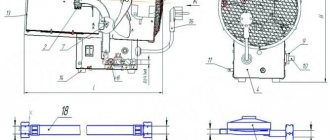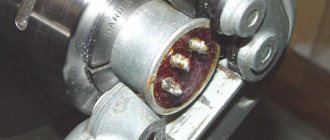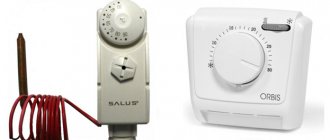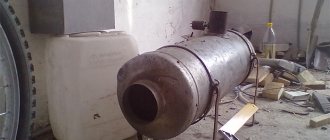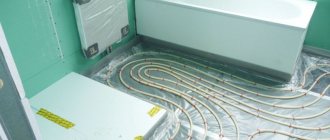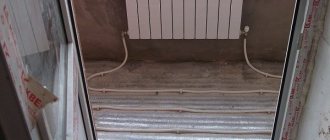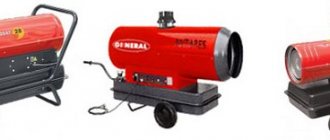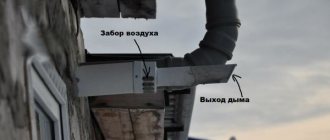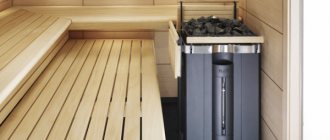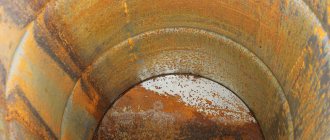Installation method
All thermal curtains are divided into two groups according to the installation method: horizontal and vertical. There is also a small third group of such fan heaters with universal installation capabilities.
The simplest and therefore most common group of thermal curtains are horizontal installations. If the height of the opening is more than 3.5 m and there is a high probability of intensive opening of the doors, then in such cases experts recommend installing one horizontal and an additional vertical curtain. In particularly difficult cases, installation of horizontal heat curtains in several levels is allowed.
If, due to low ceilings or complex wall geometry, horizontal installation of the fan heater is not possible, you should choose vertical installations.
Connection features
Modern equipment has a flexible cable and plug that provides connection to the mains through an outlet. If a stationary installation is carried out, then it is possible to connect the curtain through a central-type switch, which has an air gap and a parameter of 3 mm. This connection option is always carried out by an electrical specialist.
You can do the installation yourself, but the connection is carried out by a specialist
The connection diagram of thermal equipment to the central switch is developed individually. The simplest thing is to connect one device, and for this, two wires from the air curtain are connected to the corresponding network cables, taking into account the location of the “zero” and “phase” wires. For safety, an RCD unit is added to the chain, which can turn off the system in an emergency. The housing and all power parts must be grounded.
Video: review of the Ballu thermal curtain
Connecting air curtains from different manufacturers
The most famous manufacturers of climate control equipment are Ballu. Each manufacturer includes detailed instructions for connection and installation included with the equipment, but the main features can be considered separately.
The Ballu brand produces various models of thermal devices
Features of connecting and operating Ballu equipment are expressed as follows:
- connection to the electrical network is carried out through a circuit breaker;
- When installing fixed wiring, use a three-core cable with a minimum cross-section of 1 mm2 over a copper conductor. The electrical network to which the air curtain will be connected must provide protection of the product from overloads and short circuit currents;
- To install the control panel, you need to unscrew the screw, remove the top cover and the panel of the remote control, fix the remote control on the wall, install the panel and the top cover.
The devices have a simple design and are affordable
The device involves controlling the curtains from a remote or remote control. The degree of protection of the control panel shell is IP20. When controlling the air curtain from a remote control, it is necessary to maintain a distance to the infrared receiving device on the remote control of up to 6 m and an angle of up to 60°. The curtains are connected to the network through a circuit breaker and a residual current device (RCD). The RCD response current is 100 mA. The curtains are powered from a three-phase electrical network with a voltage of 380 V/50 Hz. The control panel requires connecting a 7x0.5 mm control cable using the “hidden wiring” method. If it is necessary to supply the cable with “external wiring”, then you should make a 50x10mm recess in the wall at the point where the wire exits from the control panel housing.
Selecting, installing and connecting thermal curtains from different manufacturers requires following general rules, including taking into account the required functionality and device parameters. Correct further operation will ensure the safety of the equipment.
- Author: Olga Novikova
Rate this article: (4 votes, average: 1.3 out of 5)
Dimensions of horizontal heat curtains
The length of standard installations varies from 60 cm to 2 m. Such devices must be located at the top of the door or window opening. For maximum efficiency, you should choose a device that is exactly the width of the opening or slightly wider.
If the length of the opening is more than 2 m, then the best option would be to use several devices located at the top of the opening. It is necessary to install the devices as close to each other as possible so that there are no “dips” in the air flow.
Attaching the thermal curtain
As a rule, air curtains are mounted on standard brackets, which are included in the air curtain delivery package. Additionally, many manufacturers offer installation kits for non-standard installations, for example, kits for attaching air curtains to the ceiling with studs. In some cases, when standard mounting kits do not meet the conditions for installing air curtains, the customer can order a non-standard kit from the manufacturer, for example, extended length studs or special extended brackets.
Selecting a device based on air flow speed
The speed of air movement produced by the thermal curtain is written in the technical documentation for the device. When choosing, you should take into account that the air flow speed is written only at the outlet of the installation, therefore, when it rises to the height of the opening, the speed will drop.
It has been experimentally proven that the most efficient operation of a heat curtain is when the air speed at the floor varies within 2.5 m/sec. – 3.5 m/sec. Below is a diagram of the dependence of air speed on the rotor diameter.
Calculation of air curtain performance
To find out how to calculate a thermal curtain based on performance, you need to consult with a specialist or make the calculation yourself, using approximate data, or using formulas.
To correctly select the performance of a thermal curtain, you should use this hint: to effectively protect an opening 1 m long and 2.5 m high, you should purchase an installation with a capacity of 1000 -1200 m3. Under such conditions, the air flow speed at the outlet of the device will be in the range of 8-10 m/s, and at the floor - 2.5-3.5 m/s.
You can use the formula for calculating the required air flow speed.
Initially, you need to calculate the speed of the air entering through the opening. This is done according to the formula:
L
pr =
V
*
H
*
V
where: H
– opening height;
B
– opening width;
V
– speed of movement of air masses.
After obtaining the desired value, you should calculate the required air speed generated by the device to protect the opening from the penetration of air masses from the outside. This can be done using the formula:
L
head =
L
pr /
j
* (
B
/
b
+ 1)
where: J
– coefficient equal to 45;
b
is the width of the curtain air channel;
B
– opening width;
To correctly select the power of the heating element of the air curtain, you need to know the air temperature in the room. Based on this, you can make a selection of equipment, since in the documentation each manufacturer indicates the difference between the intake and exhaust air.
You can calculate the required heating power yourself using the formula
Q
head = 0.24 *
L
head * (
t
end -
t
start)
where: t
start - room air temperature during suction;
t
con is the outgoing temperature of the air flow from the device.
Advantages of the device
Warm air exits through the back of the device
This type of device has many advantages. Thanks to them, the device is gaining more and more popularity every year, especially among entrepreneurs.
Advantages of a thermal curtain:
- a comfortable temperature and microclimate in the room is constantly maintained;
- significant energy savings, which are achieved by reducing heat transfer;
- absence of drafts;
- protecting buildings from dust and various insects getting inside.
Thermal curtains are often used in public areas. Where a large number of people pass regularly. These devices are also used in places with a photocell mounted in the doorway. An entry system like this opens its doors to every person who crosses the threshold. The installed thermal curtain on such openings will 100% protect the room from the penetration of cold air inside.
system is often installed at the entrances of such public facilities:
- restaurant complexes, cafes;
- large shopping centers and medium-sized stores;
- subways;
- factory and factory entrances;
- educational institutions;
- industrial-scale warehouses and freezers;
- workshops for the production of food and confectionery products;
- offices, administrations or municipal organizations.
There are different types of thermal curtains. They often differ in how they work. Electric ones are the most popular these days. Water and gas types of this equipment are also available for sale. Electrical appliances are characterized by light weight, ease of installation and good functionality.
Installation instructions for horizontal air curtains
Thermal curtains must be installed by specialists. But it often happens that after purchasing, and with detailed instructions, a decision is made to install the product yourself. And, by and large, there is nothing wrong with this, you just need to have hands, the necessary tools and strict adherence to installation and safety rules.
Before installing the heat curtain, you should know that it must be brought as close as possible to the upper edge of the opening. The device should not be in the opening of a door or window. It should be attached immediately above the opening and in its center. In addition, the manufacturer's recommendations regarding the distance from the ceiling to the device and the distance from the devices to the walls should be followed. By default, the distance from the installation to the ceiling cannot be less than 50 mm, and to the wall 100 mm.
- Select installation method: wall, ceiling.
- Make markings for the mounting brackets according to the location of the device and recommendations for minimum distances to obstacles (walls, ceilings).
If you should install a thermal curtain on a suspended ceiling, then pay attention to the operation of the ventilation system, which can become a significant obstacle to the operation of the installation.
- Drill holes and secure the mounting brackets well.
- Move the curtain towards the fastenings so that the set screws fit into the corresponding grooves.
Some models do not have mounting brackets. For wall mounting, standard holes are made in the body of such devices. To mount the device, drill a hole, insert a plastic plug and screw a self-tapping screw into it. Then put the device on such mounts.
Strapping units for thermal curtains
The connection of thermal curtains with a water heat source is carried out for the ability to regulate thermal power and performs several important functions. First of all, it quickly reaches maximum heating modes when it is necessary to operate the air curtain at maximum power. In addition, it usually does not completely shut off the water supply when the power is reduced, given the extremely undesirable possibility of freezing of the heat exchanger. The mixing unit for a thermal curtain must include a bypass.
Figure 1. Mixing unit with bypass and control valve without valve drive
This is due to the purpose of thermal curtains and their installation in the immediate vicinity of the street space. Most manufacturers offer mixing units for their models of thermal curtains for various heating systems (one-pipe, two-pipe, with different pressure drops). You can choose a piping unit so that it serves several air curtains, preferably all the air curtains on one opening. This will simplify the water scheme and reduce its cost.
